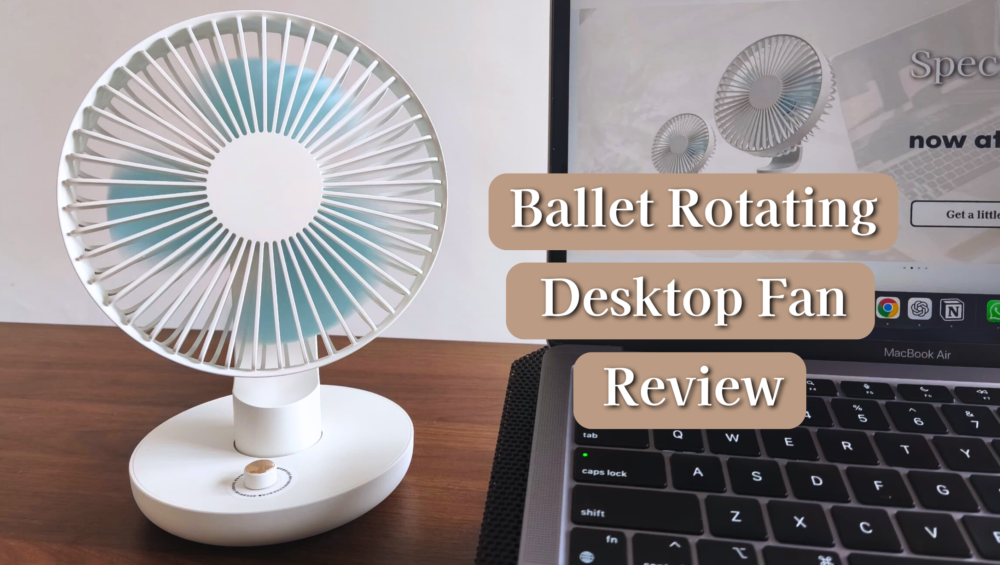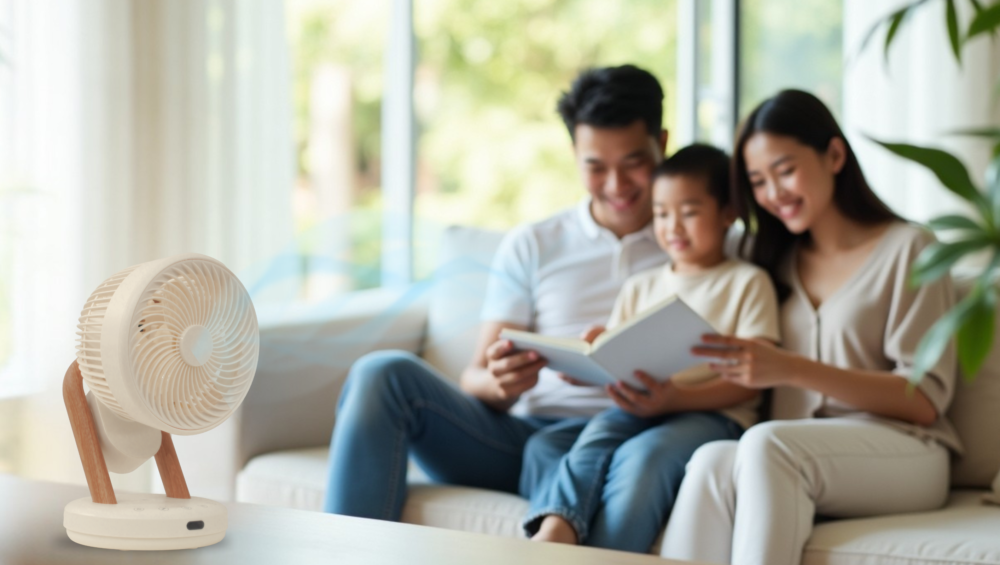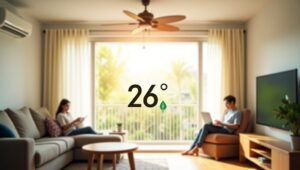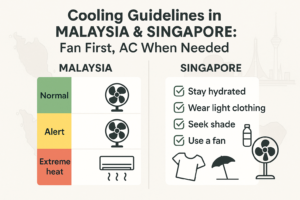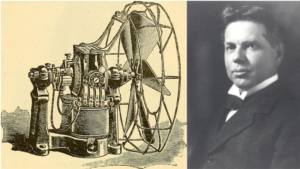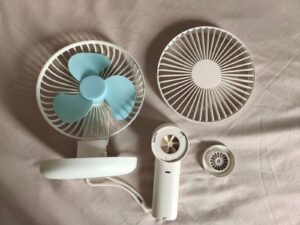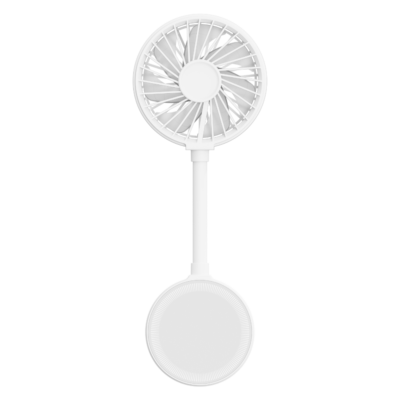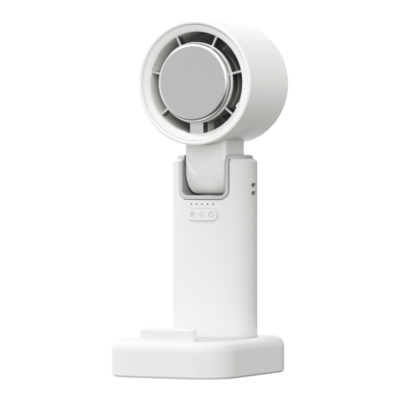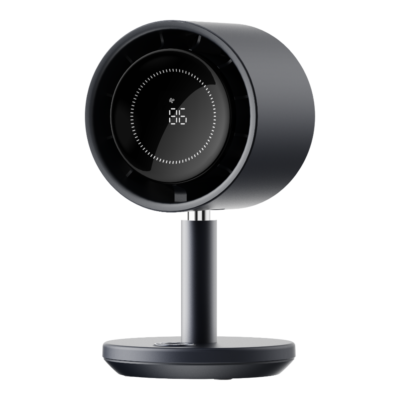If you told me a year ago that one of my most-used daily gadgets would be a small rotating desk fan, I probably would’ve laughed it off. But here we are—Meet the JustZan Ballet Rotating Desktop Fan—a compact, affordable and surprisingly capable fan that’s become a staple at both my office desk and home setup.
Let’s start from the top.
What’s in the box?
Simple and straightforward. The unboxing experience is nothing flashy, but it doesn’t need to be. Inside, you’ll find the fan unit itself, a USB-C charging cable and a basic instruction manual. That’s it and honestly, that’s all you need.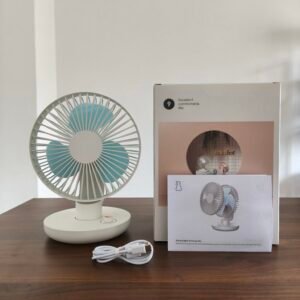
Cool Enough to Keep Me Going
This fan features 10 speed levels, but I rarely need to go past speed 2. That’s how strong it is. I usually keep it right beside my laptop, close to my face and it’s just enough to give me that extra boost of comfort, especially in an air-conditioned office. If I’m somewhere without air-conditioning, I’ll dial it up to 3 or 4, and that’s already plenty to keep me cool.
It doesn’t try to compete with a standing fan or air cooler, but for personal use, it does more than enough. For such a small device, it packs impressive wind strength.
Quiet Workhorse That Lasts
Battery performance is where this little fan shines. On a typical day, I run it at speed 2 and sometimes drop to speed 1. Under those conditions, it lasts about six hours straight. That’s a full workday of cooling.
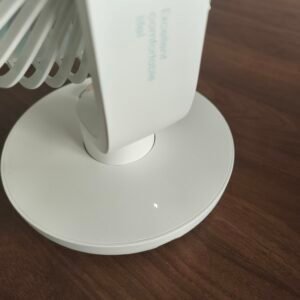
Do note though: there’s no battery percentage indicator. You only get a white light when it’s running and an orange light when the battery is low. I do wish there was a more precise way to track the battery level, but it’s not a major issue, especially since this fan is mostly used indoors. You can easily plug it in and continue using it while charging, so running out of battery isn’t something I really worry about.
Whisper Quiet on Lower Speeds
One of the standout features for me is how quiet this fan is. Speeds 1 to 5 are near-silent, even in a calm environment. It’s so quiet, in fact, that I often forget it’s on. I’ve left the office more than once with it still running beside my laptop, completely forgetting it was even there.
At higher speeds (6 to 10), the hum becomes more noticeable, but it’s still manageable. In most cases, you won’t need to push it that far unless you’re trying to cool a larger area or sharing the breeze.
Desk-Friendly and Travel-Ready
The fan is compact enough to fit into any limited space, whether it’s a crowded desk, a study corner, or a bedside table. I actually have two units—one for the office and one for home—and in both setups, it fits perfectly without taking up too much room. It’s not featherlight, but it strikes the right balance between portability and stability, making it easy to move around if needed.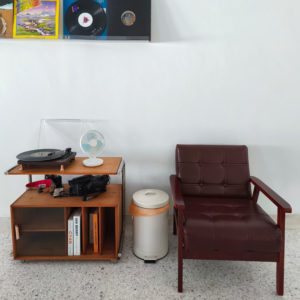
Minimalist Form, Thoughtful Function
Design-wise, it fits right in with a clean and modern home setup. The white body with subtle blue blades gives off a minimalist vibe—ideal for those who prefer neutral tones in their appliances. If you’re someone who values aesthetic harmony in your room or workspace, this will blend in beautifully.
Functionally, it ticks all the right boxes. The 180-degree horizontal rotation is perfect when I want to share airflow with a colleague nearby and the fan head tilts manually up and down, so you can easily find your preferred angle. The use of USB-C for charging is also a smart move, no more hunting for a micro-USB cable.
Despite its compact form, the fan face is relatively large, which helps push out a wide spread of air. Overall, the design is well-executed for a fan in this category.
Affordable and Practical
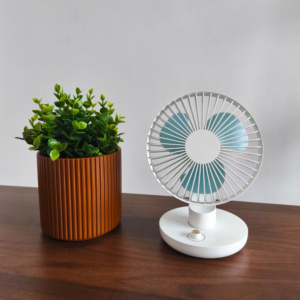
At $24.90, it’s a steal. You’re getting a well-designed, quiet and strong little fan with decent battery life and USB-C charging. It’s ideal for working professionals, students or anyone looking for a minimalist cooling solution without spending too much.
Whether you’re studying, working or winding down before bed, the JustZan Ballet Rotating Desktop Fan delivers comfort where it matters most.
The verdict
There are a lot of desk fans out there, but few check all the right boxes the way this one does. It’s small but mighty, quiet but effective and minimalist yet functional. I didn’t expect much when I first set it up beside my laptop, but now, I can’t imagine going through a workday without it.
If you’re looking for a compact fan that delivers great airflow without the bulk or noise, this is one to consider. Right now, it’s going for just $19.90 / RM59.90 with FREE delivery (within Singapore and Malaysia).
Promo valid until 31 August 2025.
👉 Check it out here if you’re ready to cool down your desk setup.
JustZan Recommends
Specifications |
Alyaa N. (Tech Editor)
|
Joshua L. (Tech Reviewer) |
Windspeed |
⭐⭐⭐⭐⭐ |
⭐⭐⭐⭐⭐ |
Battery |
⭐⭐⭐⭐⭐ |
⭐⭐⭐⭐⭐ |
Sound |
⭐⭐⭐⭐⭐ |
⭐⭐⭐⭐⭐ |
Weight/Size |
⭐⭐⭐⭐⭐ |
⭐⭐⭐⭐⭐ |
Overall |
5.0 ⭐ |
5.0 ⭐ |
